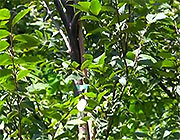
FRIDAY, April 5 (HealthDay News) — Researchers who mapped the genome of the fungus that causes Dutch Elm disease say their discovery could help scientists find ways to prevent tree deaths.
The University of Toronto researchers said they believe this is the first time the 30 million DNA letters for the fungus Ophiostoma ulmi have been mapped. The findings appeared online in the journal BMC Genomics.
“Essentially, Dutch Elm disease is caused by a fungus that prevents the normal distribution of nutrients in the tree by blocking the flow of sap. The tree wilts and eventually dies,” Alan Moses, an assistant professor in the cell and systems biology department, said in a university news release.
“Relatively little is known about the fungus that causes Dutch Elm disease, and it’s a very distant relative of the fungi that are more often studied by researchers, like bread mold or beer yeast,” Moses said. “We hope that the availability of the genome will encourage and speed up research on this fungus — it’s only a matter of time before most of the elm trees are gone.”
The disease is believed to have originated in the Himalayas and traveled from the Dutch East Indies to Europe in the late 1800s. The disease, which typically kills trees within two years of infection, is a major problem in North America and many other parts of the world.
More information
The U.S. Forest Service has more about Dutch Elm disease.

